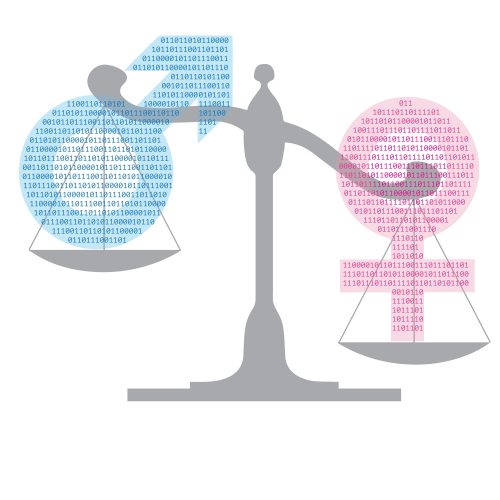Reporting on controversial issues and opinions of public interest is never easy for journalists. The New York Times recently published an article headlined “Push for Gender Equality in Tech? Some Men Say It’s Gone Too Far.” The piece focused on a “fringe element of men who say women are ruining the tech world,” and reported their views and opinions on why they feel like they are being marginalized as their work environment strives to be more diverse.
The story takes quotes from certain men who share similar views, however there are very few fact-based counterpoints presented in the article even though that evidence exists.
For news pieces, it is the responsibility of the reporter to make sure that the audience is provided enough context within the article to make an informed opinion on the information being presented.
Even though the piece notes that this is a relatively small group of men who feel this way, journalism instructor Amy Merrick believes that “what resulted was giving this group of people an uncritical platform to express these fringe views that are really not based on research or case studies about what happens in the workplace.”
Much of the interest in exploring these opinions came from the publication of a memo written by Google engineer James Damore, who claimed that women were biologically inferior to men when it came to technology related jobs.
In his memo, Damore used selective studies to back up his claims and stated that “fellow Googlers express(ed) their gratitude for bringing up these very important issues which they agree with but would never have the courage to say or defend because of our shaming culture and the possibility of being fired.”
So, naturally, the public would want to know about the other people who felt this way which led to the New York Times article.

“I think that if there are people out there that’s saying that women aren’t biologically equal to men and that’s why they shouldn’t be in that industry, they need to be challenged with straight facts to back up why that’s not true, because that’s all that we as reporters can do,” senior journalism major April Lane said.
Although coverage of these opinions is certainly of public interest, they truly hold no merit in a larger societal framework. However, very little of that background information was provided in the New York Times article.
The article mentions that “studies and surveys show there is no denying the travails women face in the male-dominated industry,” but does not draw on or link to any of those studies. Instead, the story points to some recent sexual harassment lawsuits and quotes from figures with opposing viewpoints. While they are valid counterarguments, they narrow the scope of how systematic this problem is.
“There’s always a role for the reporter in providing context,” Merrick said. “We have a lot of social-scientific research and business case studies about how people of other genders perform at work, and I think there is certainly good reason to include some of that in the story.”
According to the Bureau of Labor Statistics, the highest percentage of women in computer and mathematical occupations peaked at 36 percent in 1991 and has been declining since. The Labor Force Statistics from the Current Population Survey in 2016 has that number at 25.5 percent. In a 2014 study, Fenwick & West LLP law firm found that women only make up 11 percent of executive positions in Silicon Valley companies. The National Center for Women in Technology published research on how implicit bias, such as referring to potential candidates as “he,” reinforces sexist stereotypes in technical workplaces.
Regardless of how the men in the New York Times article feel, their systematic power is not going away any time soon.
These statistics also only represent cisgender workers in the field, excluding transgender people and a growing population that rejects gender binaries.
The reporter of the New York Times story, Nellie Bowles, has spent her career covering technology, Silicon Valley and Internet culture for the Guardian, Vice News Tonight and currently at the Times. She has been involved and ingrained in the culture for much of her career and is no doubt aware of the men who hold these opinions.
The readers, on the other hand, may not have the same background knowledge. While Bowles presented some opposing viewpoints, there is more data and social-scientific research that can easily counteract the opinions she was reporting on.
“There is always a danger in assuming that readers will reach the same conclusions that you do,” Merrick said. “You have to recognize that you have to construct your point step-by-step, provide different types of evidence and not expect that people have the knowledge in that particular domain to fill in the gaps themselves.”
Alex Moy, a graphic design and animation double major in the College of Computing and Digital Media, “felt like [the New York Times article] was setting up for a rebuttal that never came.”
Although he does not hear those views expressed outwardly in the circles he has been a part of, he recognizes that they extend beyond the tech industry.
“These men in Silicon Valley have just positioned themselves within spaces where they feel empowered to voice their opinions amongst one another,” Moy said. “How can they preach that their new tech and products will change the world, without actively taking the steps to change the world?”
When presenting the views of people who have historically been in power, it is important to use more concrete data and evidence rather than just the voice of an opposing viewpoint.
Giving opinions that systematically undermine others on such a big platform without providing enough context creates a notion of false equivalencies. Women should be able to make arguments based personal experiences, but for now, facts are the only weapons we have.



